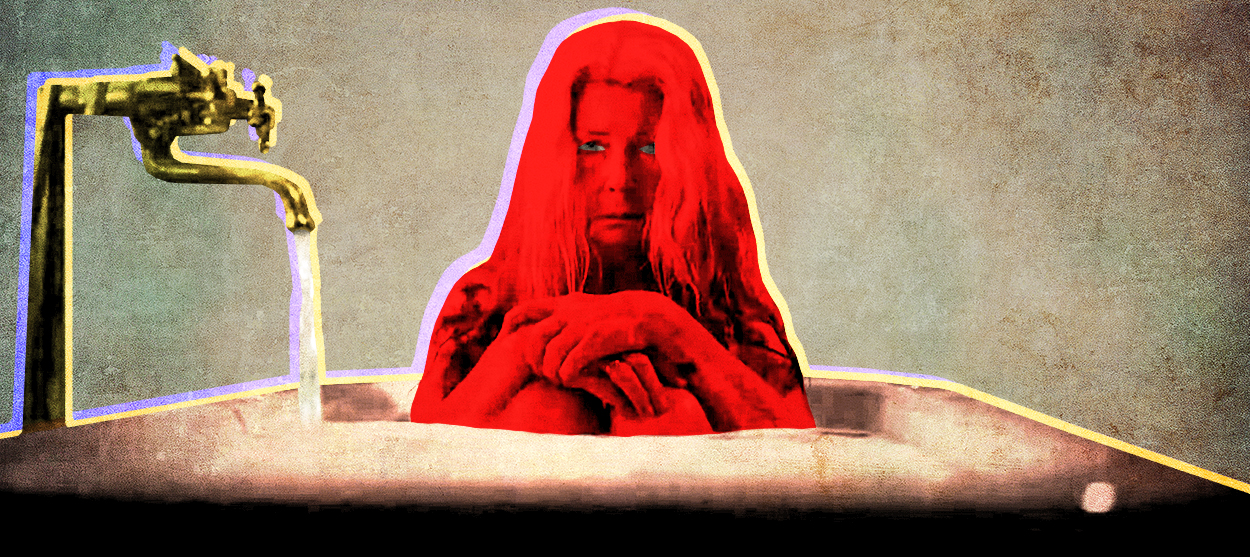Sometimes in horror, less is more
Relic is a promising, understated debut from director Natalie Erika James


Director Natalie Erika James has burst onto the scene with Relic, and it's a heck of a first film. James' debut, which hits video-on-demand Friday, is a creepy, emotional haunted house feature that often takes a less-is-more approach. For the most part, it really pays off, and her confidence suggests audiences can expect more great work to come.
Emily Mortimer stars in Relic as Kay, a woman whose mother, Edna (Robyn Nevin), goes missing. She travels home with her daughter, Sam (Bella Heathcote), as they assist in the search. But when Edna returns, Emily and Sam grapple with questions not only about where she's been, but about how to properly take care of her now, and they soon suspect something is not quite right.
When it comes to the scares, James in Relic understands that sometimes in horror it's more effective when a movie doesn't necessarily push a scare in our face. At numerous points, she's able to get under our skin with only a stray movement or shape; in some scenes, the appearance of a menacing figure is almost a blink-and-you-miss it moment. When we discover whatever it is that's lurking in the corner but that isn't accompanied by a close-up, we're left with the bloodcurdling feeling that we've stumbled upon something terrifying for ourselves. And in some cases, when it takes us a second to notice what's out of place in a frame, we're forced to ask a stomach-churning question: "how long was that thing staring at me before I realized it was there?"
The Week
Escape your echo chamber. Get the facts behind the news, plus analysis from multiple perspectives.

Sign up for The Week's Free Newsletters
From our morning news briefing to a weekly Good News Newsletter, get the best of The Week delivered directly to your inbox.
From our morning news briefing to a weekly Good News Newsletter, get the best of The Week delivered directly to your inbox.
Just take a look at Relic's opening sequence, in which a character standing frozen in place slowly turns to their left as we see what looks like a figure moving to their right, though it's partially obscured. In some other movies, this would be the setup for a big opening scare. Let's say the character sees the figure, which is gone when they look again, only for it to appear right behind them. The music cuts in, the audience jumps and spills their popcorn, and scene. But in this case, the film quickly moves on without really acknowledging anything was there at all, and so we enter the next scene unnerved, wondering if we truly did see what we think we did.
A similar technique has been utilized by plenty of great films before Relic, including during an unforgettable sequence in James Wan's Insidious. Wan follows Rose Byrne's Renai around the house as she tidies up, but when the camera pans to show her tossing laundry into a basket, we ever-so-briefly see a creepy young boy standing still on her left. She doesn't see him, but for viewers who do, discovering this boy — and the implication that he's been there this entire time that we wrongly thought we were safe — is utterly horrifying. Ghostwatch, the 1992 TV movie that took the form of a fake ghost hunting broadcast, also evoked this feeling by hiding some images of its central ghost throughout like Easter eggs, leaving us always on guard and afraid of finding one.
Relic follows in this tradition to effectively build an atmosphere of paranoia. The result is a horror movie that might be short on major, overt scares but still doesn't feel empty.
It's not just with these scares that Relic is wisely understated. Similar to the way Jennifer Kent's The Babadook tackled grief through the lens of a monster movie, Relic ultimately uses a haunted house film structure to examine the anxiety that comes with caring for an ill parent near the end of their life. For Kay, everything from an overflowing bathtub to an unexplained bruise on her mother's skin becomes as terrifying as any creature, and the film is filled with images of decay tying into its central metaphor and a disturbing backstory we soon learn about.
A free daily email with the biggest news stories of the day – and the best features from TheWeek.com
But James doesn't hold our hand through the mechanics of this tale, not going overboard with exposition or giving us one big reveal scene that conveniently brings everything into focus. The film instead communicates numerous key ideas through its visuals while certain aspects of the plot are left unsaid. Relic realizes the specifics of how this situation came to be are less important than the film's emotional reality.
As it enters a more in-your-face third act, Relic momentarily looks to be headed toward a surprisingly conventional ending. But it avoids doing so in a haunting final few minutes, including a stunning stretch that plays out almost entirely without dialogue. It's easy to imagine an inferior version of Relic's finale that overemphasized a grand "a ha!" reveal, or featured its characters explicitly spelling out the metaphor. But the same way the film doesn't necessarily underline its scares, James' conclusion, one of the most powerful in any horror film in years, is built off of imagery that really does say it all.
There are certainly times when Relic stumbles. Some key turning points could have been moved up, as the movie somewhat tests the audience's patience in its second act. But all in all, a horror film with such a firm grasp on how to generate tension with so little, and with confidence in its audience's intelligence and willingness to connect the dots themselves, is especially impressive coming from a first-time director. If James builds on everything on display in Relic, a true horror masterpiece may not be far away.
Brendan worked as a culture writer at The Week from 2018 to 2023, covering the entertainment industry, including film reviews, television recaps, awards season, the box office, major movie franchises and Hollywood gossip. He has written about film and television for outlets including Bloody Disgusting, Showbiz Cheat Sheet, Heavy and The Celebrity Cafe.
-
 8 incredible destinations to visit in 2026
8 incredible destinations to visit in 2026The Week Recommends Now is the time to explore Botswana, Mongolia and Sardinia
-
 Wave of cancellations prompt Kennedy Center turmoil
Wave of cancellations prompt Kennedy Center turmoilIN THE SPOTLIGHT Accusations and allegations fly as artists begin backing off their regularly scheduled appearances
-
 The dark side of how kids are using AI
The dark side of how kids are using AIUnder the Radar Chatbots have become places where children ‘talk about violence, explore romantic or sexual roleplay, and seek advice when no adult is watching’
